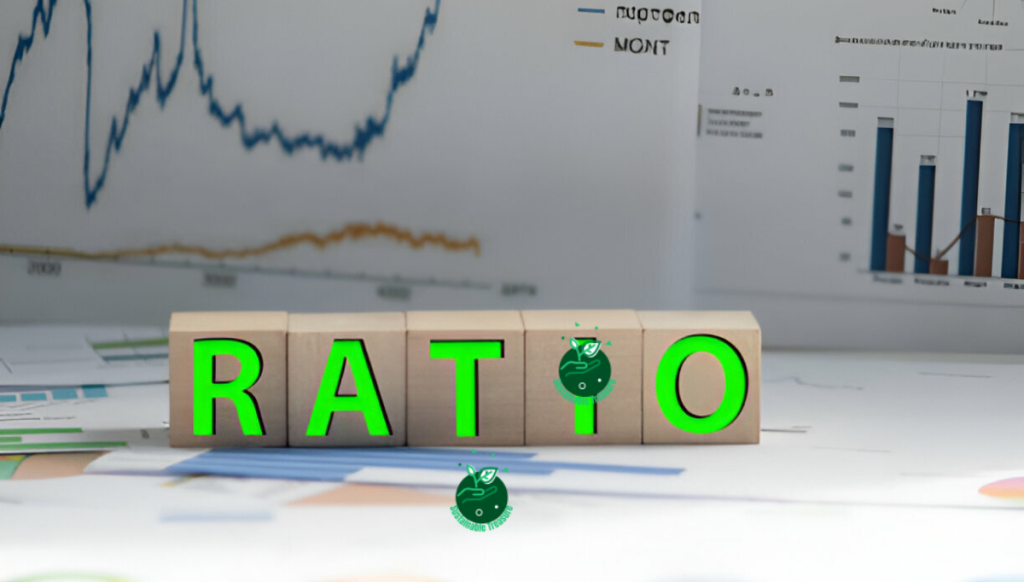Table of Contents
Do you wish to know how are ESG criteria shaping the future of investing? Yes, Environmental, Social, and Governance (ESG) criteria have emerged as a powerful force driving the future of investing.
By considering a company’s impact on the environment, its social responsibilities, and its governance practices, investors can make informed decisions that align with their values and contribute to a more sustainable future.
In the past, my investment decisions were solely driven by financial metrics, but a personal experience opened my eyes to the importance of ESG factors. When a company I had invested in was involved in an environmental disaster, I realized the profound impact businesses can have on our planet and communities.
From that moment, I vowed to prioritize ESG criteria in my investment strategy, ensuring that my capital supports companies that prioritize environmental stewardship, social responsibility, and ethical governance.
In this article, I’ll explain how ESG criteria are revolutionizing the investment landscape.
Let’s Dive in.
How ESG Criteria Are Revolutionizing the Investment Landscape
Investing is no longer just about profits – it’s about making a positive impact. Environmental, Social, and Governance (ESG) criteria have taken center stage, driving a seismic shift in how we evaluate companies and allocate capital. This comprehensive guide explores the ESG revolution reshaping the investment world.
What is ESG Investing?
ESG investing is an approach that considers a company’s environmental, social, and governance practices alongside traditional financial metrics. It aims to identify organizations that not only generate returns but also demonstrate responsible corporate behavior and sustainable business models.
Environmental Factors
Environmental factors assess a company’s environmental footprint, resource management, and efforts to mitigate climate change. Key areas include:
- Carbon emissions
- Energy efficiency
- Waste management
- Renewable energy adoption
Social Factors
Social factors evaluate a company’s relationships with employees, suppliers, customers, and the communities in which it operates. These factors cover:
- Human rights
- Labor standards
- Product safety
- Community engagement
Governance Factors
Governance factors scrutinize a company’s leadership, executive compensation, auditing practices, and shareholder rights. Strong governance is essential for ethical and responsible decision-making.
The Rise of Sustainable Investing
Once a niche concept, ESG investing has gone mainstream. According to the US SIF Foundation, assets under management utilizing ESG strategies grew to $17.1 trillion in 2020, up 42% from 2018. This surge is driven by growing environmental concerns, shifting consumer preferences, and a desire for long-term value creation.
Key Drivers of ESG Adoption
- Climate Change Awareness: The threats posed by climate change have galvanized investors to support environmentally conscious companies.
- Regulatory Shifts: Governments worldwide are introducing legislation to promote sustainable business practices, influencing investment decisions.
- Millennial and Gen Z Investors: Younger generations prioritize ethical and socially responsible investing, driving demand for ESG products.
- Institutional Investors: Pension funds, endowments, and asset managers are embracing ESG to manage long-term risks and generate sustainable returns.
ESG Scoring and Ratings
To evaluate a company’s ESG performance, various organizations provide ESG scores and ratings based on proprietary methodologies. These scores help investors compare companies within and across industries.
Popular ESG Rating Providers
- MSCI ESG Ratings: MSCI provides ESG ratings and research for over 8,500 companies and 680,000 equity and fixed income securities.
- Sustainalytics: Sustainalytics offers ESG risk ratings and research on over 20,000 companies globally.
- ISS ESG: ISS ESG provides ESG research, ratings, and analytics for institutional investors and corporate clients.
- Bloomberg ESG Data: Bloomberg’s ESG data covers over 11,800 companies across 105 countries and territories.
While methodologies vary, ESG scores typically range from AAA (highest) to CCC (lowest), assessing a company’s exposure to ESG risks and its management of those risks.
Top ESG Funds and ETFs

As investor demand for sustainable investments grows, asset managers have launched numerous ESG funds and exchange-traded funds (ETFs). Here are some of the top performers:
| Fund/ETF | Asset Class | Assets Under Management | Expense Ratio | 1-Year Return |
|---|---|---|---|---|
| iShares ESG Aware MSCI USA ETF (ESGU) | US Large-Cap Equity | $24.5 billion | 0.15% | 17.2% |
| Parnassus Core Equity Fund (PRBLX) | US Large-Cap Blend Equity | $27.1 billion | 0.63% | 15.8% |
| Calvert Equity Fund (CSIEX) | US Large-Cap Blend Equity | $4.7 billion | 0.64% | 16.1% |
| Vanguard FTSE Social Index Fund (VFTNX) | US Large-Cap Blend Equity | $3.3 billion | 0.14% | 17.7% |
| iShares ESG Aware MSCI EM ETF (ESGE) | Emerging Markets Equity | $7.1 billion | 0.25% | 10.4% |
These funds and ETFs apply various ESG screening criteria, such as excluding companies involved in controversial industries or favoring those with strong ESG practices.
ESG Integration Across Asset Classes
While ESG investing initially focused on public equities, it has expanded to other asset classes, including fixed income, private equity, and real estate.
Fixed Income
ESG integration in fixed income involves evaluating issuers’ ESG risks and their potential impact on creditworthiness. Green bonds, which finance environmentally friendly projects, have gained traction.
Private Equity
Private equity firms are increasingly incorporating ESG factors into their due diligence processes and portfolio management, recognizing the long-term value creation potential of sustainable investments.
Real Estate
The real estate industry is embracing ESG principles through green building certifications, energy efficiency measures, and socially responsible property management practices.
Challenges and Criticisms of ESG Investing
While ESG investing has gained significant momentum, it faces several challenges and criticisms:
- Lack of Standardization: ESG rating methodologies and criteria vary widely among providers, leading to inconsistent scores for the same company.
- Data Availability and Quality: Reliable and comprehensive ESG data can be difficult to obtain, particularly for smaller companies and emerging markets.
- Performance Concerns: Some critics argue that ESG investing may underperform traditional investment strategies, though studies have shown mixed results.
- Greenwashing Risks: Companies may exaggerate or misrepresent their ESG efforts, a practice known as greenwashing, to attract ESG-conscious investors.
Despite these challenges, the ESG investing movement continues to gain traction as investors, regulators, and companies work to address these issues and establish more robust frameworks.
The Future of ESG Investing
As the world grapples with environmental, social, and governance challenges, ESG investing is poised to become a cornerstone of responsible and sustainable capital allocation. Here are some key trends shaping the future of ESG investing:
- Increased Regulatory Oversight: Governments worldwide are introducing ESG disclosure requirements and sustainability-related regulations, driving greater transparency and accountability.
- Data and Technology Advancements: Improved data collection, artificial intelligence, and advanced analytics will enhance ESG data quality and enable more sophisticated ESG integration.
- Convergence of Standards: Efforts are underway to establish globally accepted ESG reporting standards, facilitating consistent and comparable ESG assessments.
- Impact Investing Growth: Impact investing, which aims to generate measurable positive social and environmental impacts alongside financial returns, is gaining momentum.
- ESG Integration Across Investment Processes: ESG factors will become increasingly embedded in risk management, portfolio construction, and stewardship activities across all asset classes.
As ESG investing evolves, it will play a crucial role in aligning capital allocation with sustainable development goals, driving positive change, and creating long-term value for investors and society alike.
FAQs

How Does ESG Investing Impact Financial Performance?
The relationship between ESG investing and financial performance has been a subject of ongoing debate. While some argue that ESG factors may negatively impact returns due to constrained investment universes, numerous studies have found a positive correlation between strong ESG practices and long-term financial performance.
Companies with robust ESG practices tend to have better risk management, stronger stakeholder relationships, and enhanced operational efficiency, which can translate into improved profitability and lower costs of capital. Additionally, companies that prioritize sustainability and ethical conduct are better positioned to navigate evolving regulatory landscapes and capitalize on emerging opportunities in the transition to a low-carbon economy.
What Are The Main ESG Rating Providers?
Several organizations specialize in providing ESG ratings and research to investors. Some of the most prominent ESG rating providers include:
- MSCI ESG Ratings: MSCI is a leading provider of ESG ratings, research, and data for over 8,500 companies and 680,000 equity and fixed-income securities globally.
- Sustainalytics: Owned by Morningstar, Sustainalytics offers ESG risk ratings, research, and analytics for over 20,000 companies worldwide.
- ISS ESG: ISS ESG provides ESG research, ratings, and analytics to institutional investors and corporate clients across various asset classes.
- Bloomberg ESG Data: Bloomberg’s ESG data covers more than 11,800 companies across 105 countries and territories, enabling investors to incorporate ESG factors into their investment decisions.
While methodologies vary, these providers aim to assess companies’ exposure to ESG risks and their management of those risks, providing valuable insights for investors seeking to align their portfolios with their values and sustainability goals.
How Do I Evaluate An ESG Fund Or ETF?
When evaluating an ESG fund or exchange-traded fund (ETF), it’s essential to consider several factors beyond just the fund’s investment strategy and performance. Here are some key considerations:
- ESG Screening Criteria: Review the fund’s prospectus or fact sheet to understand its ESG screening criteria, such as exclusionary screens (e.g., controversial industries) or positive screening for companies with strong ESG practices.
- ESG Rating Provider: Identify the ESG rating provider(s) the fund uses to assess companies’ ESG performance, and research their methodologies to ensure alignment with your investment values.
- Expense Ratio: Compare the fund’s expense ratio to similar funds, as higher fees can erode returns over time.
- Portfolio Holdings: Analyze the fund’s top holdings to ensure they align with your ESG preferences and risk tolerance.
- Active or Passive Management: Determine whether the fund is actively or passively managed, as this can impact its ability to respond to changing market conditions and ESG trends.
By thoroughly evaluating these factors, you can make an informed decision and select an ESG fund or ETF that aligns with your investment objectives and ESG principles.
What Are The Key Challenges In ESG Investing?
While ESG investing has gained significant traction, it faces several challenges that investors should be aware of:
- Lack of Standardization: ESG rating methodologies and criteria vary widely among providers, leading to inconsistent scores for the same company, which can create confusion and hinder comparability.
- Data Availability and Quality: Obtaining reliable and comprehensive ESG data can be challenging, particularly for smaller companies and emerging markets, where disclosure practices may be less robust.
- Greenwashing Concerns: Some companies may exaggerate or misrepresent their ESG efforts, a practice known as greenwashing, to attract ESG-conscious investors, making it difficult to identify truly sustainable companies.
- Performance Concerns: There is ongoing debate about whether ESG investing may underperform traditional investment strategies, although studies have shown mixed results.
- Regulatory Uncertainty: The lack of consistent regulatory frameworks and disclosure requirements for ESG reporting across jurisdictions can create uncertainties for investors and companies.
Despite these challenges, the ESG investing landscape is rapidly evolving, with efforts underway to address these issues through increased standardization, improved data quality, and enhanced transparency and accountability measures.
What Is The Difference Between ESG Investing And Impact Investing?
While ESG investing and impact investing share some similarities, they are distinct approaches with different goals and strategies:
ESG investing, or socially responsible investing (SRI), primarily focuses on integrating environmental, social, and governance factors into the investment decision-making process. The primary goal is to generate competitive financial returns while considering a company’s ESG performance and sustainability practices.
On the other hand, impact investing goes a step further by actively seeking investments that generate measurable positive social or environmental impacts alongside financial returns. Impact investors actively allocate capital to organizations or projects that address specific challenges, such as renewable energy, affordable housing, or access to healthcare.
In essence, ESG investing is a more broad-based approach that considers ESG factors as part of the investment analysis, while impact investing is a targeted strategy that aims to create intentional, measurable impacts in addition to financial returns.
How Can I Incorporate ESG Factors Into My Investment Portfolio?
There are several ways to incorporate ESG factors into your investment portfolio, depending on your investment goals, risk tolerance, and personal values:
- Invest in ESG Funds or ETFs: Invest in mutual funds or exchange-traded funds (ETFs) that specifically incorporate ESG criteria into their investment strategies.
- Use ESG Screening Tools: Utilize online tools or software that allow you to screen potential investments based on ESG factors and align your portfolio with your values.
- Engage with Investment Managers: For managed portfolios, discuss your ESG preferences with your investment manager or financial advisor and request the integration of ESG factors into their investment processes.
- Direct Stock Picking: If you manage your own portfolio, conduct thorough research on individual companies’ ESG practices and performance, and invest in those that align with your ESG principles.
- Consider Impact Investments: Allocate a portion of your portfolio to impact investments that intentionally seek to generate positive social or environmental impacts alongside financial returns.
By incorporating ESG factors into your investment decisions, you can align your portfolio with your values while potentially mitigating risks and capitalizing on opportunities associated with sustainable business practices.
How Do Companies Report And Disclose Their ESG Performance?
Companies report and disclose their environmental, social, and governance (ESG) performance through various channels, including:
- Annual Reports: Many companies include ESG information and disclosures in their annual reports, providing stakeholders with an overview of their sustainability initiatives, goals, and progress.
- Sustainability Reports: Companies often publish dedicated sustainability or ESG reports, which provide comprehensive information on their ESG strategies, policies, performance metrics, and future targets.
- Corporate Websites: Companies maintain dedicated sections on their websites to showcase their ESG policies, programs, and achievements, making it easier for stakeholders to access this information.
- Regulatory Filings: In some jurisdictions, companies are required to disclose certain ESG-related information in their regulatory filings, such as annual reports or prospectuses.
- Third-Party Frameworks: Companies may participate in various third-party frameworks or initiatives, such as the Global Reporting Initiative (GRI) or the CDP (formerly the Carbon Disclosure Project), which provide standardized disclosure requirements and guidelines.
However, the depth and quality of ESG disclosures can vary significantly across companies and industries, as there are currently no universally accepted standards for ESG reporting. Efforts are underway to establish more consistent and comparable ESG reporting frameworks to enhance transparency and accountability.
What Role Do Governments And Regulators Play In ESG Investing?

Governments and regulatory bodies play a crucial role in shaping the landscape of ESG investing through various policies, regulations, and initiatives:
- Mandatory ESG Disclosure Requirements: Some jurisdictions have introduced mandatory ESG disclosure requirements for public companies, ensuring greater transparency and comparability of ESG information for investors.
- Sustainable Finance Regulations: Regulators are developing frameworks and guidelines to promote sustainable finance practices, such as the EU’s Sustainable Finance Disclosure Regulation (SFDR) or the Hong Kong Monetary Authority’s sustainable banking principles.
- Climate Risk Disclosure Standards: Initiatives like the Task Force on Climate-related Financial Disclosures (TCFD) provide recommendations for companies to disclose climate-related risks and opportunities, enabling investors to better assess climate-related risks.
- Sustainable Taxonomies: Governments and regulators are developing taxonomies or classification systems to define and categorize sustainable economic activities, helping investors identify and allocate capital towards sustainable investments.
- Incentives and Support: Some governments offer incentives, such as tax credits or subsidies, to encourage investments in sustainable projects or industries, while others provide support through public-private partnerships or green investment funds.
By implementing these policies and regulations, governments and regulators aim to promote transparency, accountability.
Conclusion: Embracing the ESG Revolution
As we’ve explored, ESG criteria are reshaping the investment landscape, driving a shift towards more sustainable and responsible capital allocation.
By considering environmental, social, and governance factors, investors can mitigate risks, capitalize on opportunities, and align their portfolios with their values.
Remember, ESG investing is not just a trend; it’s a fundamental shift in how we evaluate companies and measure success. Embrace this revolution by incorporating ESG criteria into your investment strategy, actively engaging with companies on their ESG practices, and supporting initiatives that promote transparency and accountability.
Take action today and join the growing movement of investors who are shaping a more sustainable and equitable future through their investment decisions.
Image: Credit Istock



